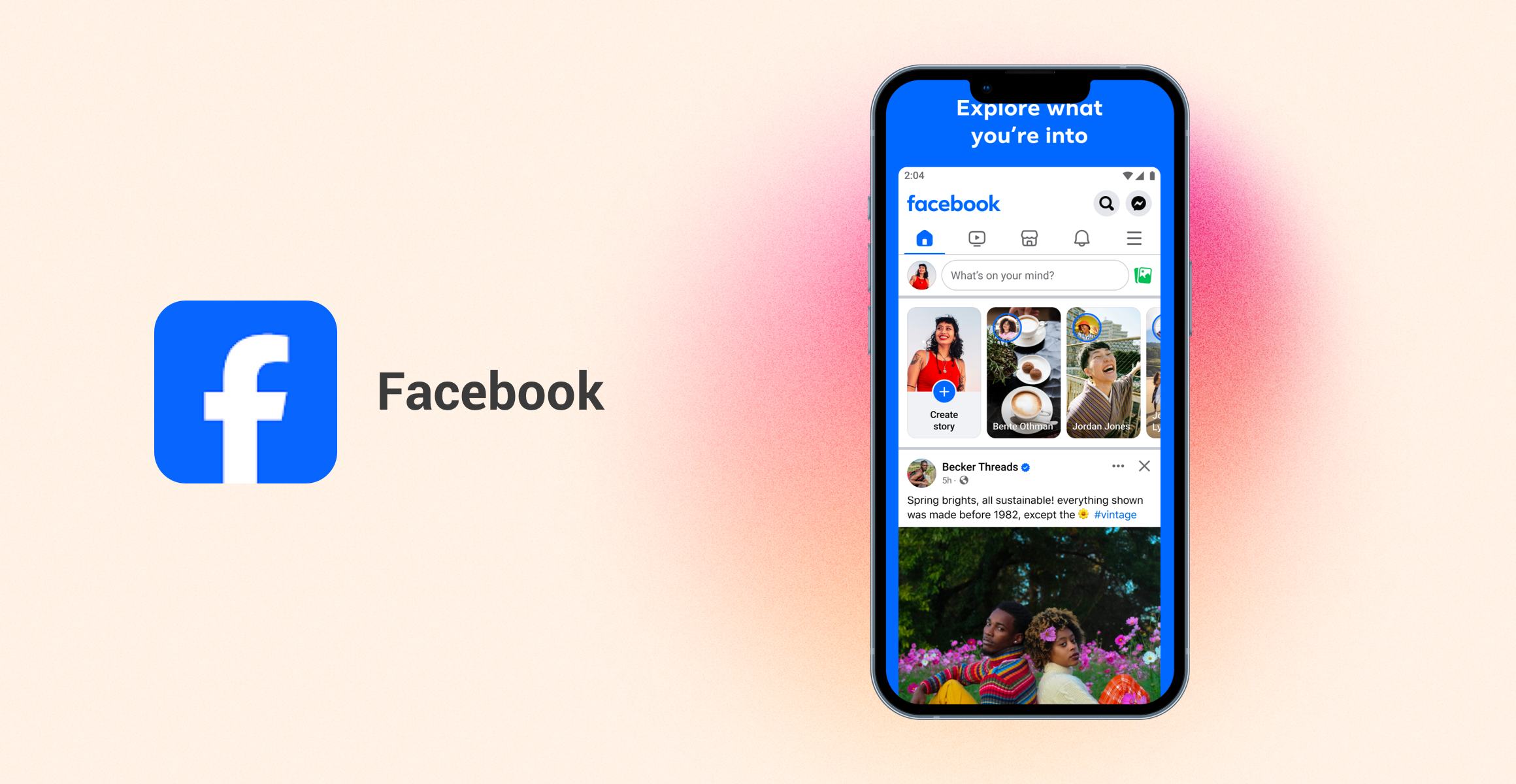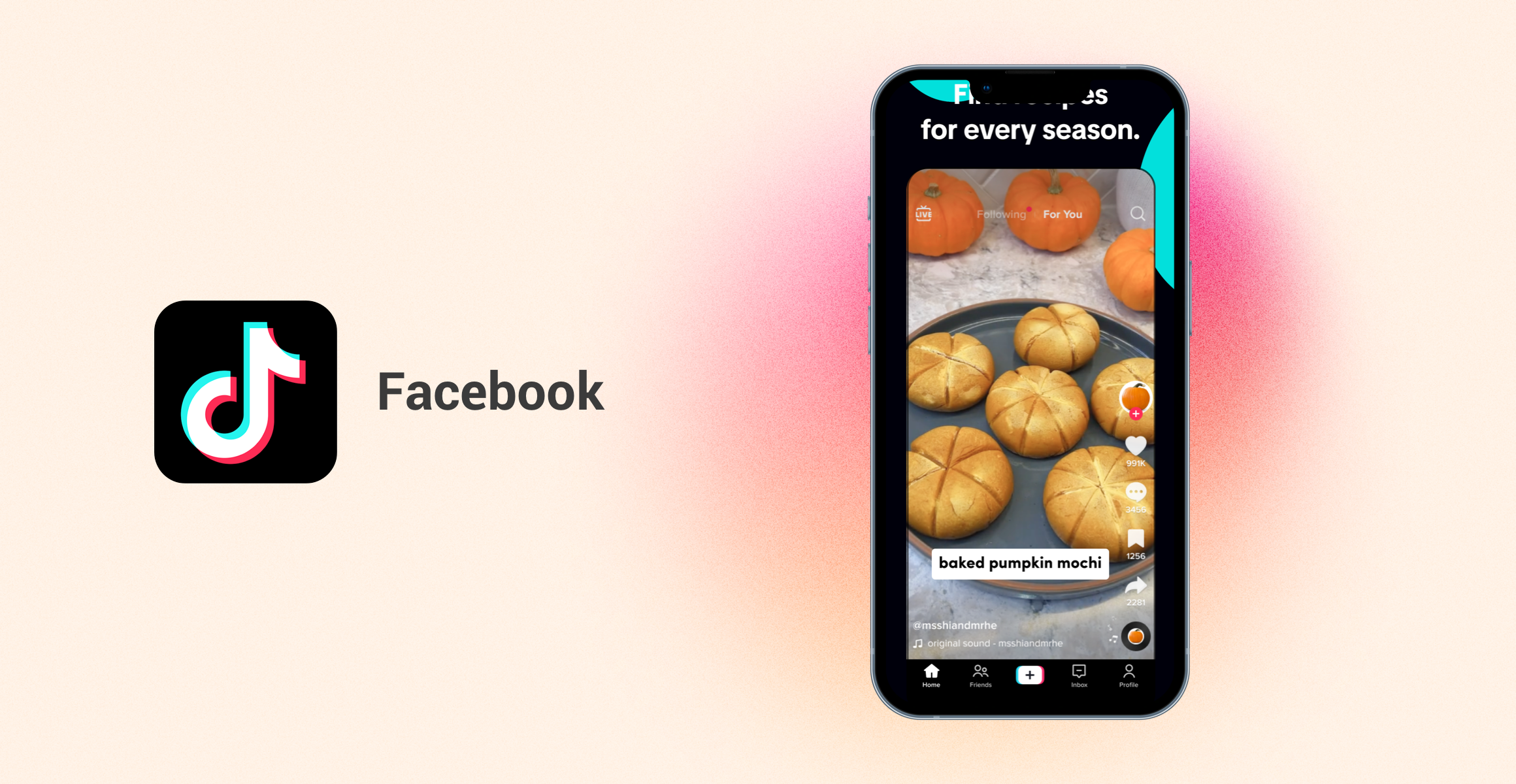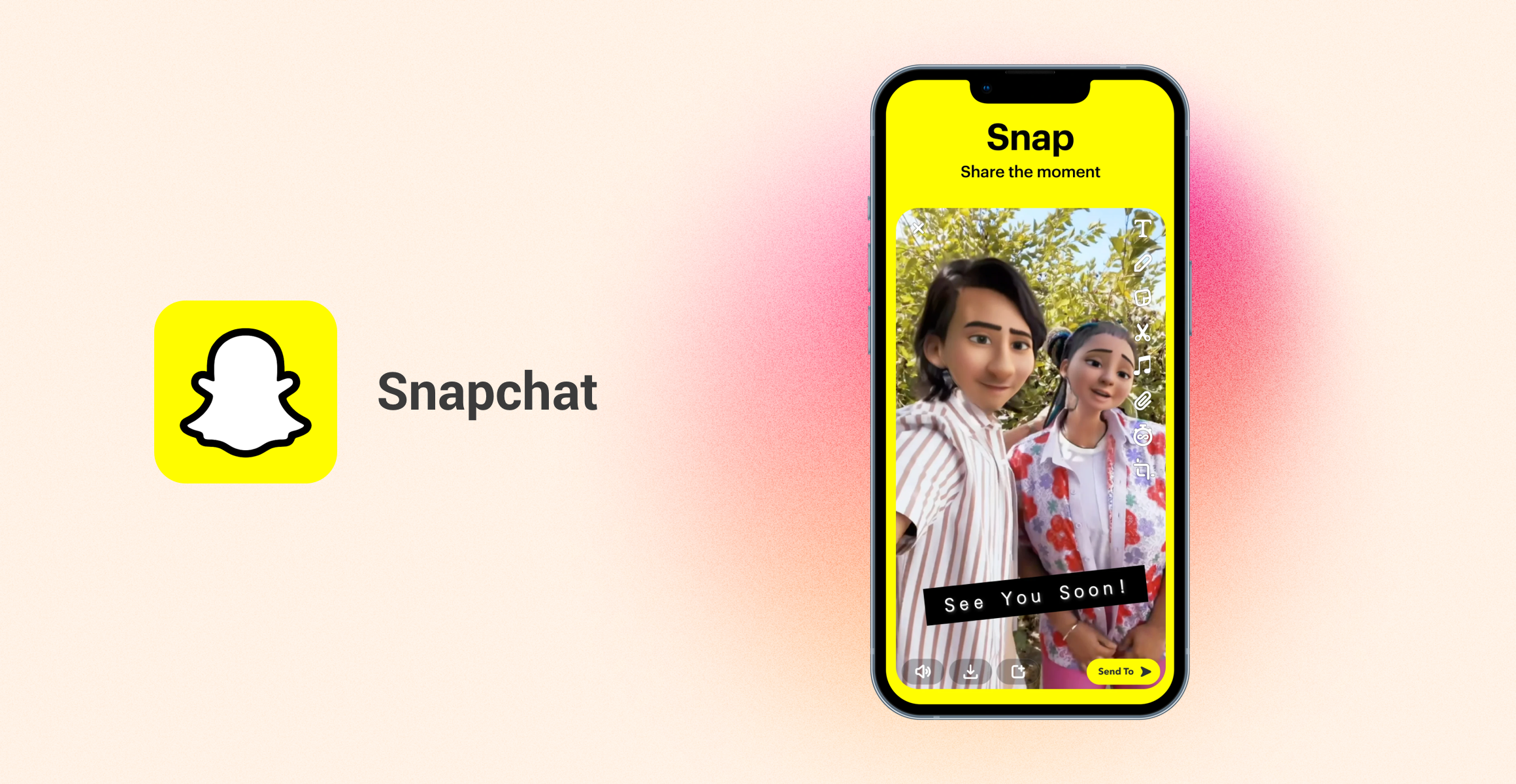In-Depth Reviews of Seven Popular Social Apps: Exploring the User Experience of Facebook, TikTok, X, Reddit, Messenger, Telegram, and Snapchat
Intruction
Facebook, TikTok, X (formerly Twitter) and Snapchat are the major forces in the current social media landscape. Facebook provides a versatile platform designed to facilitate communication, entertainment, and information sharing with users around the globe, revolutionizing the way we connect, share, and consume content. With its news feed, live streaming capabilities, and diverse groups and pages, Facebook not only gives individual users a space to express themselves, but also provides brands and businesses with powerful marketing tools that greatly expand the boundaries of the social network.
TikTok has risen quickly with its unique form of short video content. Through the intelligent algorithm recommendation system, this platform accurately pushes creative and interesting video content to users, thus attracting the attention of a large number of young users in a short time. TikTok is more than just an entertainment platform, its influence has permeated culture, fashion and even politics, becoming one of the important birthplaces of contemporary digital culture.
As a powerful real-time communication and news dissemination platform, X encourages simple and powerful communication with its micro-borg style. The platform is not only the go-to source for breaking news, but also an important channel for public discourse and instant updates. X's openness and immediacy make it a part of the global conversation, playing an integral role both in socio-political events and in celebrity interactions with fans.
Snapchat has revolutionized the way we share moments by emphasizing ephemeral content, creativity, and impromptu communication. The "Burn After reading" feature, in particular, is popular with young people because it reduces the pressure and embarrassment of sharing content. Snapchat not only provides rich filters and AR effects to enhance the user experience, but also recommends quality content to users through the "Discover" page, further consolidating its competitiveness in the social field.

User experience
Since its launch in 2004, Facebook has become one of the largest social networking platforms in the world. Its intuitive interface design and rich features such as live streaming, instant messaging and multimedia sharing make it easy for users to interact with others and share various forms of content. Both individual users and brands can find ways to interact with each other on Facebook. Users can connect with like-minded people by creating a personal page or joining interest groups. In addition, Facebook offers powerful advertising tools that allow businesses to reach their target audiences. However, with the explosive growth of information, users are also facing the problem of information overload. The massive data flow and the continuous emergence of content may cause users to get lost in the ocean of information and find it difficult to find truly valuable content. In addition, prolonged use of Facebook can also lead to excessive screen time, which can adversely affect users' mental health. Therefore, users need to learn to manage and filter information when using Facebook, and maintain moderate usage habits.
In contrast to Facebook's versatility, TikTok stands out for its seamless and highly addictive user experience. The short video app uses simple swipes and powerful video editing tools to enable users to quickly create and browse various types of short videos. TikTok's unique algorithms push personalized video streams based on users' interests and interactions, allowing users to unintentionally spend a lot of time on the app. TikTok's short video format and creative effects have made it an important platform for the young generation to express themselves and give play to their creativity. That said, TikTok also faces challenges with content filtering and screen time management. Since anyone can easily post content, the quality of information on the platform varies, and users may encounter misinformation or vulgar content. At the same time, TikTok's highly entertaining and addictive design may cause users to overindulge, affecting their daily life and work. Therefore, when using TikTok, users need to have certain media literacy and rationally treat the content on the platform.
X (formerly Twitter), with its minimalist design and real-time updated content stream, quickly became an important platform for getting the latest news and trends. X's short text "tweet" format makes it extremely convenient to publish and read information, and users can quickly get the latest news from around the world. In addition, X's openness and interactive nature make it an important place for public discussion and exchange of ideas. Users can not only follow celebrities and politicians, but also participate in the discussion of various hashtags, forming a broad social network. However, the minimalist design of the X also brings the problem of information overload. Faced with the constant stream of tweets, users may feel overwhelmed and have difficulty distinguishing between the authenticity and significance of the information. In addition, the heated discussions and extreme views on X may sometimes lead to the spread of online violence and negative emotions. Therefore, users need to maintain rational and critical thinking when using X, and avoid being misled by one-sided information.
Snapchat, on the other hand, focuses on instant and ephemeral interactions, providing users with a unique social experience. Its unique "burn after reading" function and rich AR filters allow users to express themselves more freely and enjoy the fun of instant messaging. Snapchat's "Stories" feature allows users to share highlights of the day and stay connected with friends. However, Snapchat also faces challenges in content filtering and privacy protection. Due to the automatic disappearance of content, some users may neglect to review their own posted content, resulting in inappropriate or in violation of laws and regulations. In addition, Snapchat's privacy Settings and terms of use are complex and changeable, and users may need to invest more time to understand and adjust to protect their privacy. Therefore, when using Snapchat, users should raise their awareness of privacy protection and carefully manage their social circle.

Application features
Facebook's profile is at its core, allowing users to stay in touch with friends and family, join interest groups, follow pages of interest, and share and get information through news feeds, stories, marketplaces, events, and more. On Facebook, users can not only post status updates and share photos and videos, but also participate in a variety of instant chats and video calls. This versatility makes Facebook a comprehensive social platform that caters for everything from simple everyday communication to complex social interactions.
TikTok, for its part, is known for the creation and sharing of short videos of 15 seconds to 3 minutes, encouraging users to be creative and engage with the community through a "recommend for you" page, video creation tools, duets and reaction features, and challenges and hashtags. TikTok's innovation lies in its powerful video editing tools and special effects capabilities, which make it easy for even users without professional backgrounds to create high-quality short videos. Challenges and hashtags on the platform further stimulate the enthusiasm of users to participate, forming a vibrant community.
X (formerly Twitter) focuses on the sharing of short 280-character messages, or tweets, that facilitate rapid information exchange and discussion through threads, Spaces, retweets and likes, as well as trending topics and hashtags. The X's design is simple and efficient, making it ideal for spreading news and instant information quickly. Users can participate in discussions by retweeting and liking, and get the latest information by following hot topics. This design makes X an ideal platform for journalists, businesses and ordinary users to quickly convey information and express opinions.
Snapchat features Snapchat Snaps and Stories, which combine AR filters and lenses, discovery and spotlight features, chat features, and memories and Snap maps to give users a fun and expressive social experience. What makes Snapchat unique is its ephemeral messaging feature, which attracts a large number of young users who want privacy and fun interactions. In addition, AR filters and lenses add fun and creativity to interactions, enabling users to express themselves in entirely new ways.

Application ecology
Facebook is the world's largest social networking platform with more than 2.5 billion monthly active users. To protect users' security and privacy, Facebook offers a variety of tools, such as two-factor authentication, privacy checks, and custom audience Settings. These features give users more control over their data and who they share information with. However, due to its large user base and complex algorithms, users still need to be vigilant and cautious about sharing personal information. In addition, Facebook provides users with practical help through official support and user-led forums, especially in resolving account issues and understanding privacy Settings. Facebook's community building is also very rich, from local interest groups to international fundraising, users can participate in various forms of community, get support and sense of belonging.
TikTok has risen quickly with its youthful, dynamic image, with a special focus on the safety and privacy of young users. The platform provides account privacy Settings, teen mode, and regularly updated data processing practices to ensure safe use by minors. Still, TikTok faces ongoing privacy discussions due to its rapid growth. Parents and guardians need to be aware of these potential risks and take advantage of privacy Settings to keep their children safe. TikTok's vibrant community supports a variety of niche interests and emerging trends, offering users practical help through tutorial videos and community support. In addition, TikTok's creative content and short video formats are popular with young people, making it an ideal platform to express themselves and discover new things.
The X platform is constantly striving to balance open dialogue with user security. By introducing account verification, content moderation, and advanced privacy Settings, the X platform strives to create a secure environment. However, its fast-paced nature sometimes makes it difficult to effectively manage harmful content, and users need to use Settings carefully to protect their information. The X platform's diverse and dynamic community includes celebrities, politicians and ordinary users, encouraging public discussion and enabling direct interaction with influencers. Official support is detailed and responsive, and can handle user feedback in a timely manner. Support within the community is also very active, with users interacting and helping to solve problems quickly.
Snapchat, on the other hand, features its "go live" app, which emphasizes privacy. Snaps will be automatically deleted and users will be notified when the screenshot is taken, further enhancing privacy. The app offers a variety of privacy control options, allowing users to customize who can view their stories and send messages. Features such as Ghost Mode are introduced to hide a user's location for added security. Snapchat's community is active and diverse, and by following friends, celebrities, and content creators, users can experience a diverse stream of personal updates and entertainment. An in-app help center offers troubleshooting tips and guidance, while community members actively share ideas and offer support on forums and social media.

Competitor Comparison
In the field of social media, the major platforms have their own characteristics and the competition is fierce. Facebook stands out for its versatility, offering a full range of features from text and multimedia posts to complex social networking opportunities, making it a generalist in the social media space. In contrast, Instagram, also owned by Meta, is more focused on visual content, while Twitter excels at real-time updates and public discussion. TikTok differentiates itself from Instagram Reels and YouTube Shorts with its innovative approach to content curation, and despite the latter offering a similar short video experience and having a large video library and user base, TikTok's algorithms and user engagement are unmatched. Its ability to set trends and quickly adapt to new forms of content has placed it firmly at the forefront of short video platforms.
The X platform (formerly Twitter) has excelled at providing real-time updates and facilitating public discussion, and while Facebook offers a more comprehensive range of features and Instagram focuses on visual content, X remains the preferred platform for concise, impactful communication and instant news dissemination. Snapchat, facing competition from Instagram and TikTok, offers a more interactive and fun experience with its heavy emphasis on AR lenses and filters, in contrast to the glossy feel of Instagram or the video-centric nature of TikTok. The app's privacy features and spirit of impromptu sharing also set it apart, appealing to users who value instant and intimate communication. While Instagram and TikTok continue to grow, Snapchat's unique approach has kept it relevant and beloved by many, especially those who like to capture and share split-second moments.
Each of these platforms is unique, but they all strive to enhance the user experience and enhance the diversity of interactivity and content creation. For example, Facebook is constantly rolling out new features, such as Facebook Watch and Facebook Dating, to attract more different types of users. Instagram expanded its business model by adding shopping features and IGTV. Twitter has not only improved its character limit, but also introduced new features such as "Super Follow" to increase user engagement. TikTok continues to optimize its recommendation algorithm and incentivize creators to produce quality content through the TikTok Creator Fund.
In addition, social media platforms are also exploring more ways to commercialize and monetize. Instagram, for example, has seen significant revenue growth through its shopping features and advertising platform. TikTok, on the other hand, relies on its large user base and high engagement to attract a lot of brand partnerships and advertising. Snapchat, through its unique AR technology and advanced filters, has attracted many brands to engage in innovative advertising partnerships.
As technology continues to advance and user needs change, social media platforms are constantly evolving. For example, artificial intelligence and machine learning techniques are widely used in content recommendation and AD targeting, enhancing user experience and business effectiveness. Virtual reality (VR) and augmented reality (AR) are also bringing new interactive experiences to social media. Platforms such as Facebook Horizon and Snapchat Lens Studio are actively exploring this space to provide more immersive experiences.



